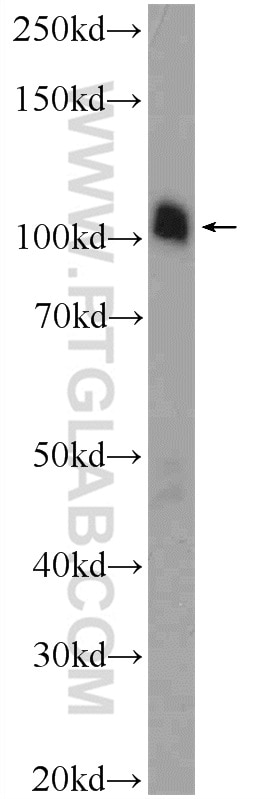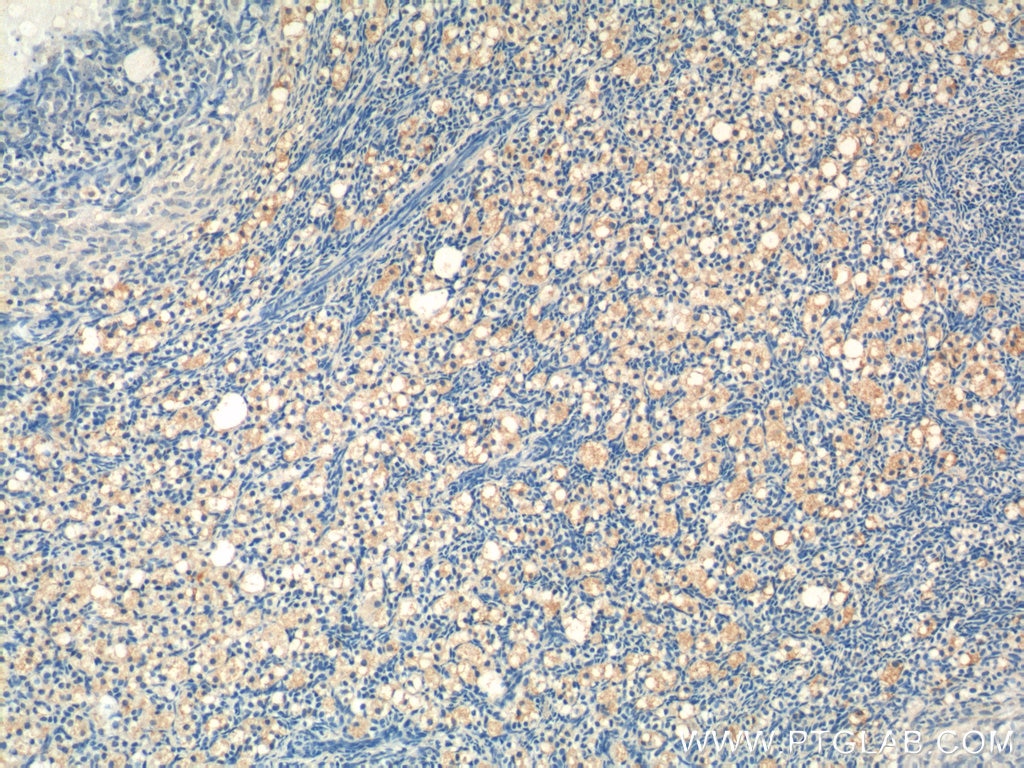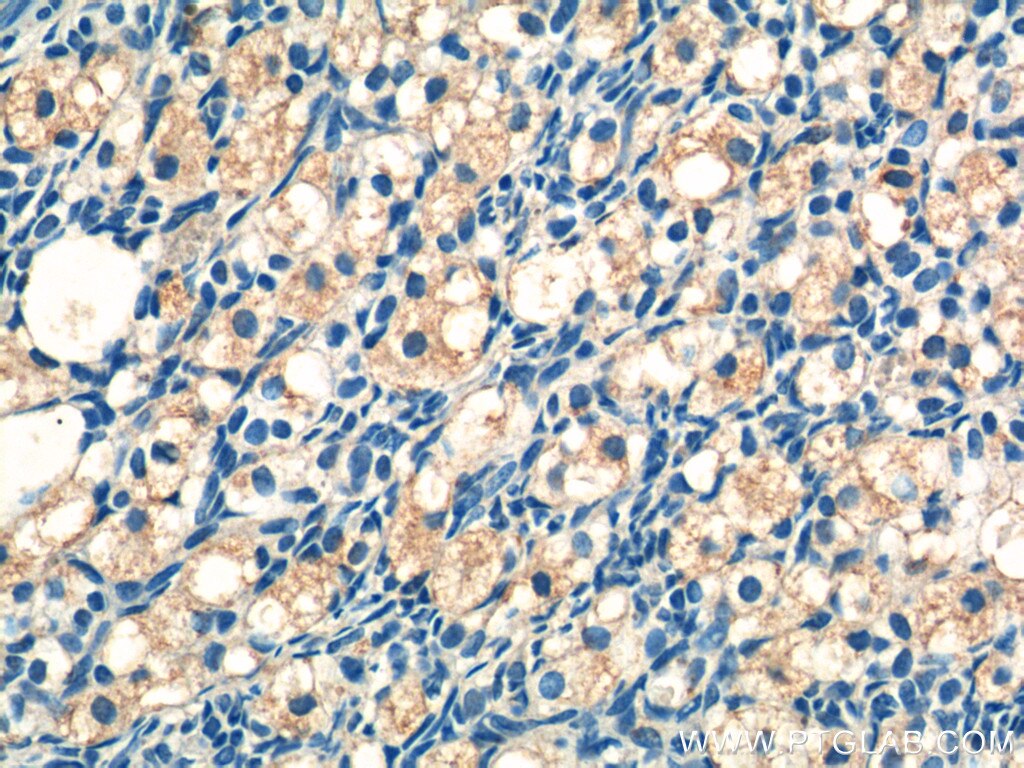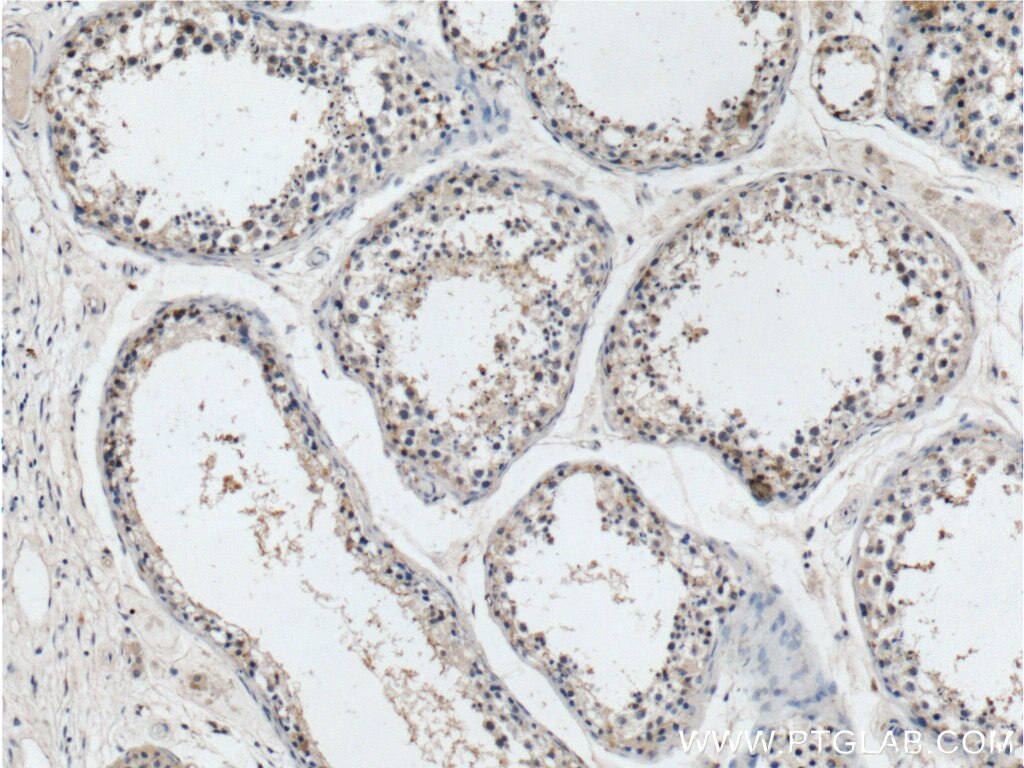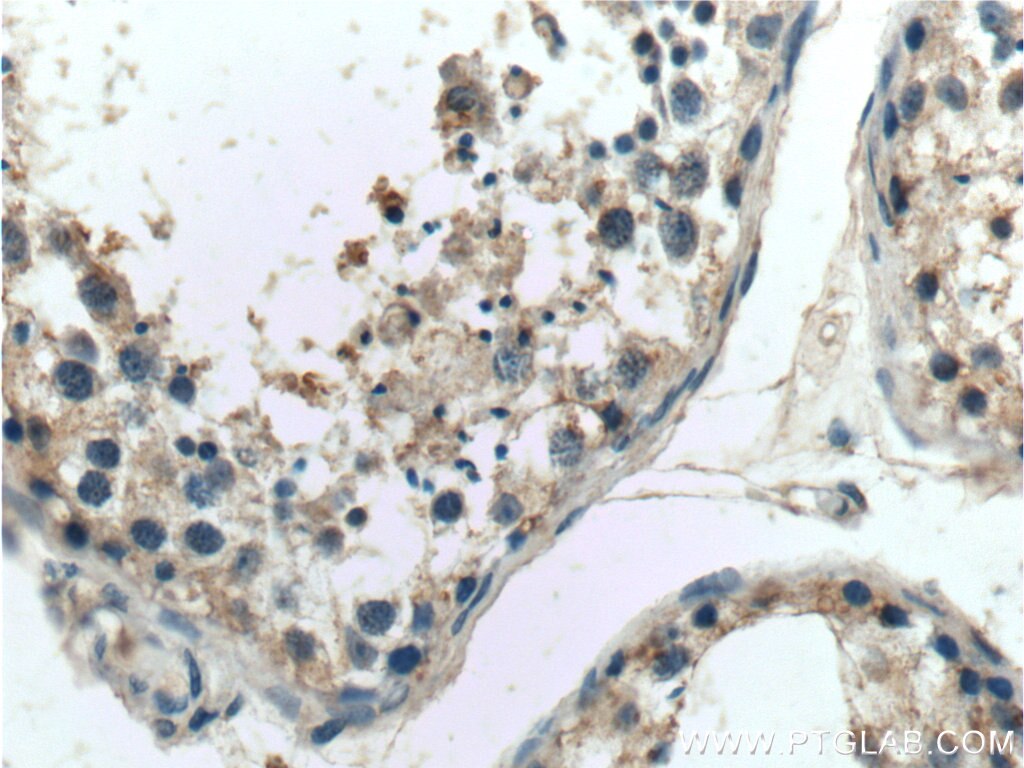Validation Data Gallery
Tested Applications
| Positive WB detected in | mouse testis tissue |
| Positive IHC detected in | human ovary tissue, human testis tissue Note: suggested antigen retrieval with TE buffer pH 9.0; (*) Alternatively, antigen retrieval may be performed with citrate buffer pH 6.0 |
Recommended dilution
| Application | Dilution |
|---|---|
| Western Blot (WB) | WB : 1:200-1:1000 |
| Immunohistochemistry (IHC) | IHC : 1:20-1:200 |
| It is recommended that this reagent should be titrated in each testing system to obtain optimal results. | |
| Sample-dependent, Check data in validation data gallery. | |
Product Information
19243-1-AP targets ATN1 in WB, IHC, ELISA applications and shows reactivity with human, mouse samples.
| Tested Reactivity | human, mouse |
| Host / Isotype | Rabbit / IgG |
| Class | Polyclonal |
| Type | Antibody |
| Immunogen |
CatNo: Ag5835 Product name: Recombinant human ATN1 protein Source: e coli.-derived, PET28a Tag: 6*His Domain: 842-1191 aa of BC051795 Sequence: LAQEGRAPVECPSLGPVPHRPPFEPGSAVATVPPYLGPDTPALRTLSEYARPHVMSPGNRNHPFYVPLGAVDPGLLGYNVPALYSSDPAAREREREARERDLRDRLKPGFEVKPSELEPLHGVPGPGLDPFPRHGGLALQPGPPGLHPFPFHPSLGPLERERLALAAGPALRPDMSYAERLAAERQHAERVAALGNDPLARLQMLNVTPHHHQHSHIHSHLHLHQQDAIHAASASVHPLIDPLASGSHLTRIPYPAGTLPNPLLPHPLHENEVLRHQLFAAPYRDLPASLSAPMSAAHQLQAMHAQSAELQRLALEQQQWLHAHHPLHSVPLPAQEDYYSHLKKESDKPL 相同性解析による交差性が予測される生物種 |
| Full Name | atrophin 1 |
| Calculated molecular weight | 125 kDa |
| Observed molecular weight | 105-110 kDa |
| GenBank accession number | BC051795 |
| Gene Symbol | ATN1 |
| Gene ID (NCBI) | 1822 |
| RRID | AB_2878575 |
| Conjugate | Unconjugated |
| Form | |
| Form | Liquid |
| Purification Method | Antigen affinity purification |
| UNIPROT ID | P54259 |
| Storage Buffer | PBS with 0.02% sodium azide and 50% glycerol{{ptg:BufferTemp}}7.3 |
| Storage Conditions | Store at -20°C. Stable for one year after shipment. Aliquoting is unnecessary for -20oC storage. |
Background Information
ATN1 also known as Atrophin-1 is a protein that in humans is encoded by the ATN1 gene. Dentatorubral pallidoluysian atrophy is a rare neurodegenerative disorder characterized by cerebellar ataxia, myoclonic epilepsy, choreoathetosis, and dementia. The disorder is related to the expansion of a trinucleotide repeat within this gene. The encoded protein includes a serine repeat and a region of alternating acidic and basic amino acids, as well as the variable glutamine repeat.
Protocols
| Product Specific Protocols | |
|---|---|
| IHC protocol for ATN1 antibody 19243-1-AP | Download protocol |
| WB protocol for ATN1 antibody 19243-1-AP | Download protocol |
| Standard Protocols | |
|---|---|
| Click here to view our Standard Protocols |

